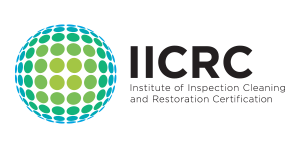Things about Dry Star Restoration
Things about Dry Star Restoration
Blog Article
What Does Dry Star Restoration Do?
Table of ContentsThe smart Trick of Dry Star Restoration That Nobody is Talking AboutUnknown Facts About Dry Star RestorationSome Known Questions About Dry Star Restoration.What Does Dry Star Restoration Mean?The smart Trick of Dry Star Restoration That Nobody is Discussing
Within minutes, the cooking area was ablaze, causing substantial damages and needing months of restoration work. Specifically in winter, home heaters are a typical fire danger. Malfunctioning wiring or placing heating units also near to combustible products like curtains can ignite a fire. Constantly maintain heaters far from anything that can shed and inspect them consistently.
Stats: According to the National Fire Protection Organization, home chemicals are liable for a significant portion of home fires each year. By knowing these common causes, you can take steps to make your home safer.
Indicators on Dry Star Restoration You Need To Know

Trick problems consist of: Water Invasion: Water can leak into wall surfaces, floors, and furnishings. This can weaken the structural stability of your home. Build Growth: If water is not dried out swiftly, mold can begin to grow within 24-48 hours. Mold can cause wellness problems and further damages to your residential property. Architectural Weakening: Water can compromise wooden structures and cause steel components to corrosion, making your home harmful.
Next off, we will certainly dive right into the actions involved in the fire damages restoration procedure. Fire restoration is the process of cleaning, fixing, and bring back a home that has been damaged by fire.
Examine This Report on Dry Star Restoration
Debris Removal and Demolition: Damaged materials are securely eliminated, and any dangerous substances like asbestos are taken care of suitably. Fire damage includes numerous kinds of injury to a residential or commercial property: Physical Damages: This includes charring, blackening, and disintegration of products straight affected by the fire.
Water Damages: Water used to extinguish the fire can lead to architectural weakening and mold growth if not correctly handled. Fire repair specialists use specialized techniques and devices to attend to all these sorts of damages, making certain the residential or commercial property is risk-free and comfortable once more. Next, we will certainly study the steps associated with the fire damages restoration procedure.
From advanced water removal devices to specialized devices for smoke and soot removal, we have the sources required to recover your residential property to its pre-loss problem. Our techniques are made to be thorough and effective, reducing additional damages and accelerating the recovery procedure. Our group includes licensed service technicians who are professionals in fire damages remediation.
What Does Dry Star Restoration Do?
Their competence guarantees that every task is done right, providing you with satisfaction throughout a tough time. If you require fire damage repair services, don't hesitate to call us. We're below to assist you recover your home and your life after the fire. Last modified on 15th of July 2024.
(https://www.intensedebate.com/people/dryst4rrstrtn)If there's a fire, smoke is sure to adhere to. While the fire's smoke is made up of aspects that make your home risky to be in, the damages smoke leaves behind doesn't anchor stop there. Smoke will certainly drift to seemingly every component of your home, sticking to furnishings, design, drapes, wall surfaces, ceilings, floors, and a lot more.
The water will certainly saturate right into the charred materials and infected various other locations of the home untouched by the fire. If left unchecked or missed during fire damages repair, the water damage will just get worse with time and can bring about mold and mildew growth, safety and security problems for your home's structure, and undesirable appearances around your area, including distorted flooring, peeling off paint, and visible stains.
Fascination About Dry Star Restoration
Water mitigation is typically the primary step of the fire, smoke, and water damages repair process after a damage control has actually been completed. This attends to the water damages head-on and includes actions to avoid additional issues for your area before, during, and after remediation. Evaluation and damage control to examine the level of water damageIsolation of water damages to affected locations to prohibit water from infecting dry areasInspection of your home's foundation for architectural stabilityExtraction of any standing water from the propertyStructural drying out with commercial-grade equipmentSite cleanup that will clear away particles, pack out salvageable content for restoration, and give way for reconstruction servicesWe'll likewise finish extra damages mitigation by boarding up damaged doors and windows, applying tarps to holes in roofings, and finishing various other steps to stop added damages and dangers to your home while the fixings are occurring.
Many terms and descriptions used by water and fire damage repair contractors are fairly obvious. Nonetheless, the list of terms below ought to be of aid when you're interacting with the firm you've employed. Any kind of action taken to prevent the development and spreading of fungi, mold, mildew, and spores. This can include using solvents or chemicals as ingredients or obstacles on building products to stop fungus development.
Report this page